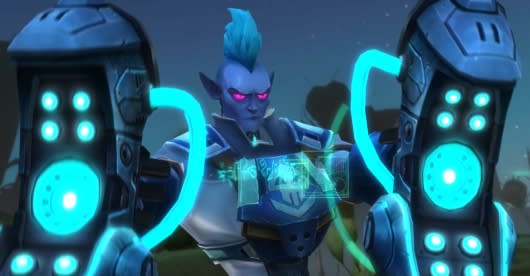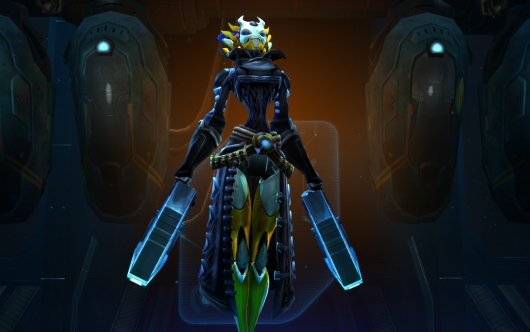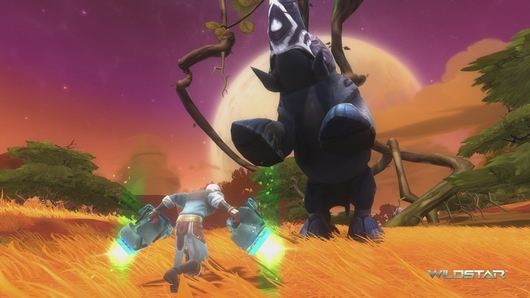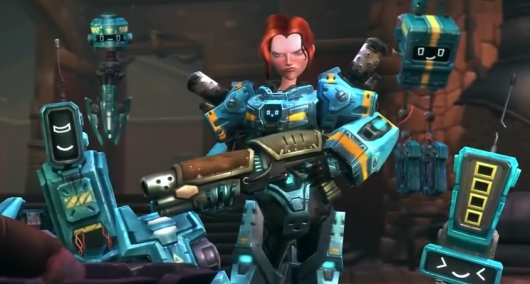Massively's hands-on with WildStar's Medic
My favorite classes in games are the ones that inspire spit-takes.
The fact is that I don't really hate your bog-standard Warriors or Mages or whatever. But the classes that really get me interested are classes that demand that you explain what they do and how someone came up with that concept. Guild Wars has the Dervish, World of Warcraft has the Shaman, Final Fantasy XI has the Corsair -- they're flavorful, they're unique, and they're just plain neat.
Combine that with my love of melee and WildStar's Medic had me from hello. I really like getting into the paint with things, I like the idea of a healer focused on getting up close and dancing, and I love the idea that medics balance between being doctors and technological shock troops. So jumping into the beta, I was happy to dive into the shoes of the doctor and start doing a whole lot of harm to anyone and everyone who opposed the Dominion.
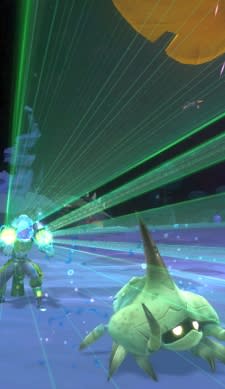
First, do harm
The first thing to keep in mind with Medics is that they really are melee healers. You can argue that they get to stay a little further out of danger than the Warrior or the Stalker, but even their first direct heal works in melee range. Hanging far back from the action is just going to result in a useless Medic. This is why it really matters that they have a very useful toolkit of tricks to help them both survive out in the world and keep other people alive.
Like the other classes, the Medic starts out slow. You have your basic attack, Discharge, then your basic power core consumption ability, Gamma Rays. Right away you're set into a pretty understandable routine; Discharge builds cores while Gamma Rays deals more damage and consumes them. So you fire off Gamma Rays, build up more cores, and so forth. Rays also introduces you to some of the variety possible in telegraphs, as it has a strong central beam and two "satellite" beams that deal less damage. Try to aim for the center, yes, but you can clip other targets.
Your next trick, Paralytic Surge, is a quick stun, and after that you pick up Nullification Field, which teaches you to work with your various Field abilities. On paper, it sounds pretty simple -- you drop an area that deals damage and slows anyone standing within. In practice, however, because you need to be so mobile during fights, that field feels very small. You have to really engineer your movement carefully to get maximum effect from it.
This is as good a point as any to note that WildStar can be pretty rough at times, especially as a Medic. Talk about the class having a high skill requirement wasn't just chatter; it was a factual evaluation. Medium armor is enough that you can cling to life a bit longer, your healing abilities act more as a buffer than as a constant regenerating health pool, and your damage output is not extraordinary right out of the gate. That means carefully figuring out what you're doing and how you're doing it, dodging telegraphs, and making a build that allows you to keep running and gunning for as long as possible.
In my case, that meant picking up Shield Surge (a less-damaging attack that also restores shields) and Fissure (a pulse attack that lower defenses) and swapping out Nullification Field, giving me more reliable options for dealing damage and healing while still moving around. Past your fourth slot, the game cleverly gives you a couple of new abilities as you unlock a new slot on your action bar, constantly encouraging you to play with new builds and try different abilities.
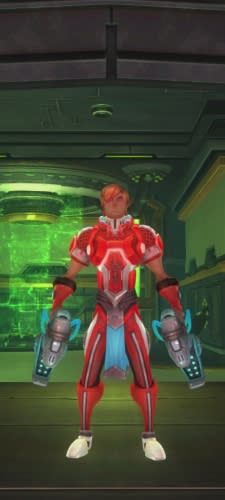
Apply pressure
AMPs and tier points both allow you to fine-tune that build and what you want to do with it. Spending AMP points allows you to improve various capabilities, like your damage output, your shield regeneration, and so forth. The effects are small at first, but they're set up such that you can improve the capabilities you naturally focus on rather than being locked into a single tree of improvements.
Tier points come in a little bit later, but they're both nice and another way to keep encouraging you to try new builds. I mentioned my love for Shield Surge, so obviously I sank points into improving that first. Each ability has eight tier improvements. Most of them simply increase the effects, so putting points in Shield Surge meant a bigger shield buff and damage. At rank 4 and rank 8, though, each ability has a new improvement added in... some of which encourage you to play with something in a different way.
For example, Paralytic Surge has an added effect if it hits an enemy affected by a field at 4 points. That means that if you really don't like using fields, you're encouraged to start playing around with them more. Others apply additional effects for keeping enemies inside the field for the full duration of the channeled ability. They're all buffs, but they aren't as simple as "now you are more awesome." Of course, this is all gleaned from tooltips, so perhaps in practice at those levels it's more automatic.
At level 11, I had a pretty solid build for my playstyle through careful use of probes and abilities. I'd open with Fissure and Devastator Probes, tossing Repair Probes on myself while using Shield Surge as my big punch, with Paralytic Surge as an on-demand stun and Discharge as my core building ability. The fun part was that I didn't feel as if I'd picked out the only viable build for my level, just the one that suited my own playstyle the best. Not that it made playing a Medic less tricky, but it meant that I felt rewarded for careful use of abilities and movement.

Trauma centers
I'd be remiss in not talking about the actual play environment instead of just discussing the class. And it's a good... but I do have a minor quibble or two.
The initial tutorial zone comfortably introduces you to the most basic mechanics of the game and the overall feel of your faction, giving a top-level overview of how your class and path works while leaving plenty of room for you to play around. The next area gives you more chance to miss things and more opportunities to experiment while at the same time pushing you forward organically.
Stuff is happening and you feel that you've got enough freedom to move around but not so much freedom that you get lost. The tweet-quest format works very well here, giving you just enough information to know what you're doing without burdening you with unnecessary fluff... although you can ask questions and learn the fluff if you want. There's also a wonderful contrast between how the factions are presented to one another. The Exiles are being harassed and fought by the Dominion, and the Dominion is enemy number one, but the Dominion is mostly focused on doing its own thing. The Exiles aren't whom you're hunting; they just keep getting in the way when you're doing other stuff.
At any rate, it's off to the first real zone after that, and here the map expands greatly, sending you out and about, hither and yon, and... hold on a moment, can I catch my breath? Log out for like two minutes? Maybe take a breather?
If there was a designated resting spot in town, I didn't find it, and I looked. I'm well aware that this is one of the big mechanical things behind getting a house, but it also created a feeling of added pressure, as if I was being told that I wasn't allowed to log off just yet because I had too many things to do. No time to relax! You need to smash stuff in the face! Look at all this! Level up and your entire screen explodes with glee, oh yeah!
And hopefully you're not fighting anything when that level up happens because good luck dodging the surfeit of telegraphs when your entire screen is flashing and letting you know you dinged.
The point I'm getting at is that the game has a lot of stuff here and now and places a nice emphasis on kinetic motion rather than following the more sedate pace found in other MMOs. This is a good thing in many ways, but it also means that it occasionally feels as if too much is going on at once. You're overloaded on new information and denied a stopping point, and it can get a bit wearying. Even though I'm someone who really likes the whole telegraph system, amidst the numerous fights with three or four enemies at once I sometimes found myself overloaded by stuff going on at once and how do I dodge this?
All that energy can go into overload, in other words.
But even with those minor quibbles, when the game is on, it is on. Sure, I had moments of frustration, but dancing about and smashing things up with a Medic was great fun, and I certainly wasn't ever bored. I don't know whether Medic is going to be the first class I focus on when the game launches, but I'm excited to see more of it and how it plays at the higher levels.
Don't miss the rest of today's WildStar coverage!

